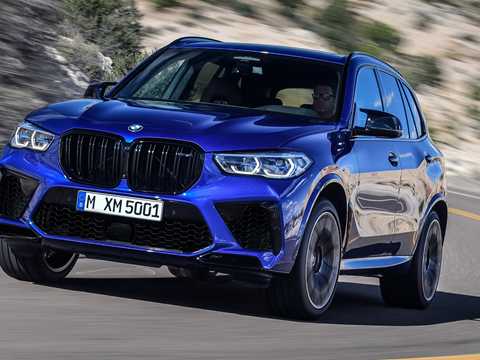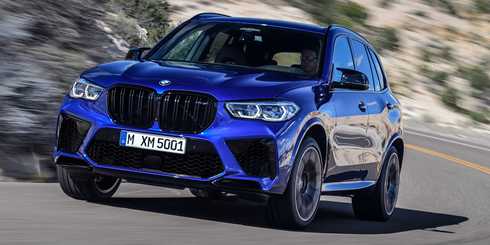The Federal Chamber of Automotive Industries (FCAI), in collaboration with Holden and Mercedes-Benz plus other car brands in Australia have launched a new campaign called ‘Genuine Is Best’.
The campaign hopes to educate the Australian consumer that buying counterfeit or fake wheels could have deadly consequences.
In a first for Mercedes Benz, Holden Australia allowed them to use the Lang Lang proving ground to test out what happens when fake wheels don’t meet Australian safety standards.
Engineers from Holden and Mercedes-Benz set up a test that allowed Mercdes-benz CLA 45 AMG to hit a large pot hole when being driven at 50km/h.
In each of the test to that involved the front right wheel on a Mercdes-benz CLA 45 AMG was driven in straight line at the pot hole for each test.
The two fake wheels that were tested both suffered badly in the test, with piece of the wheel flying off as it hit the pot hole. The genuine wheels suffered no such problems.
Speaking at the launch of the new initiative was Genuine Is Best ambassador and motorsport great Mark Skaife OAM. “Seeing the fake wheels break after hitting the pothole was shocking — if this was to happen at highway speeds the consequences could be severe,” Mr Skaife said. “The truth is these wheels are likely to be on cars out on Australian roads now.
“Genuine parts are made or selected by the vehicle’s maker and rigorously assessed by that maker as an integral component of the vehicle to meet high quality, safety and performance standards.
“So if you’re going to change your wheels or your vehicle needs repairs after an accident or even during a service, it’s crucial that genuine parts are used to ensure your vehicle drives, functions and protects you the way the vehicle’s maker intended.
“To ensure you’re getting a genuine part, source it through the vehicle manufacturer’s authorised supply chain,” Mr Skaife said.
Consumers who suspect that their car may be fitted with counterfeit or fake advised to take there car to their dealership for insecption.
Genuine Is Best Lang Lang experiment - details:
AIM:
The goal of this test was to compare the performance of genuine versus non-genuine rims in a controlled test environment simulating typical Australian road conditions.
METHOD:
Wheels
The fake wheels chosen for the test were imitations of a Mercedes-AMG multispoke wheel seen on CLA 45 AMG, A45 AMG and C63 AMG models.
The fake wheel size was 19x8-inch with a 5x112mm stud pattern — the same as the genuine CLA 45 AMG wheel. While the fake wheel’s 43mm offset was 5mm less than that of the genuine CLA 45 AMG wheel, engineers from Mercedes-Benz and Holden agreed this difference would not affect test results.
Initial analysis of the wheels indicated that they were cast from a mould of a previous generation C63 AMG wheel, complete with Mercedes-Benz identification codes.
Weighing 12.77kg the fake wheels were 0.46kg heavier than the genuine C63 AMG wheel they were likely cast off and 0.35kg lighter than the genuine CLA 45 AMG multispoke wheel.
The fake wheels were found to be only slightly unbalanced.
Genuine and non-genuine wheels were fitted with a control tyre for the test. This was the same tyre Mercedes-Benz fits as standard to its Mercedes-AMG wheels — in this case a Continental ContisportContact in 235/35 ZR 19 size.
Purchasing
Four sets of the fake wheels were purchased through an Australian-based online store. The wheels were advertised for sale as new and suitable for a CLA 45 AMG.
Cars
Mercedes-Benz provided a CLA 45 AMG Shooting Brake vehicle for the test. The driver was the only occupant in the vehicle for each run of the test. Apart from the driver the vehicle was unladen. The vehicle was fitted with calibrated GPS measuring equipment to accurately determine and record the vehicle’s speed.
People involved
Overseeing the test was Holden’s Lang Lang Proving Ground Vehicle Safety Manager who was assisted by the proving ground and test lab’s engineering manager and a specialist engineer.
From Mercedes-Benz Australia there was a senior engineer for engineering, certification and testing and a technical support manager.
Behind the wheel of the vehicle was a Holden test driver.
Venue
General Motors Holden’s Proving Ground at Lang Lang was used for the test. The proving ground’s Pothole No.3 is a specially calibrated steel well with a gentle sloping entry and steep exit slope to replicate a pothole a driver could encounter in real-world Australian road conditions. In the test only the wheels on the right-hand side of the vehicle ran over the pothole.
THE RESULTS
The following table shows the damage to the front right wheel after each run though the pothole test. A new wheel was used for each run.
|
Run |
Speed |
Wheel |
Result |
|
1 |
50 km/h |
Fake |
Major damage, section of rim broken off – approx. 100mm (impact between spokes) |
|
2 |
50 km/h |
Genuine |
No visible damage (impact at spoke) |
|
3 |
50 km/h |
Genuine |
No visible damage (impact at spoke) |
|
4 |
50 km/h |
Genuine |
No visible damage (impact at spoke) |
|
5 |
50 km/h |
Fake |
Major damage, section of rim broken off – approx. 100mm (impact at spoke) |
|
6 |
50 km/h |
Genuine |
No visible damage to rim (impact at spoke) |
|
7 |
50 km/h |
Genuine |
No visible damage to rim (impact between spokes) |
CONCLUSION
The pot hole test clearly demonstrated that the fake wheels were unable to match the stress tolerances of the genuine wheels at 50km/h.
At just 50km/h the fake wheels broke on impact while the genuine wheels remained visibly undamaged.
ENGINEER’S OBESERVATION
“It should be noted that the vehicle impact speed in the pothole testing was 50km/h and the vehicle was almost at its lowest possible mass. In many real-world driving situations the vehicle could be travelling at both a higher speed and loaded to a higher mass. In these higher energy scenarios the structural performance of the fake wheel would be expected to be even lower than that observed in our testing,” GM Holden Vehicle Safety Manager.




















